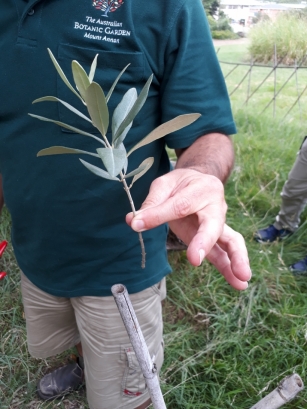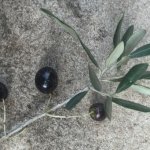Waaaaay back when this blog started we had a look at Elizabeth Farm and a tree almost as old as the house itself – the 213 year old olive that stands to one side of the carriage loop.
This week our colleague Steve Halliday, a horticulturist with SLM’s gardens team, has been writing about an exciting project to propagate the tree, with the expertise of Mt Annan botanic gardens. Back in the mists of time (well, February 2017, but it seems like an epoch ago) some 100 cuttings were taken, of which 30 successfully thrived. Steve writes:
Initially the olives were placed in a root inducing potting mix and placed into a humidity and temperature controlled glasshouse, which encouraged root growth, and reduced any moisture lost through the leaves. Once roots had formed the rooted cuttings were then transferred in to larger pots and nutrient rich soil mixture as they reached the different stages of maturity. As with most plant propagation there will always be a percentage of plants lost throughout the process, due to a range of factors. Our olives had around a 30% success rate, meaning we had 30 plants survive from the original 100 cuttings. This is a relatively low strike rate but often what happens with very old plants.

The size of the semi hardwood cutting taken from the tree. Photo (c) Rebecca Jones, Sydney Living Museums
You can discover more of this project, and where one of the plants has already found a home, in SLM’s Gardens Blog Plant Your History.
Posts from the Cook and the Curator on the olive tree at Elizabeth Farm:



